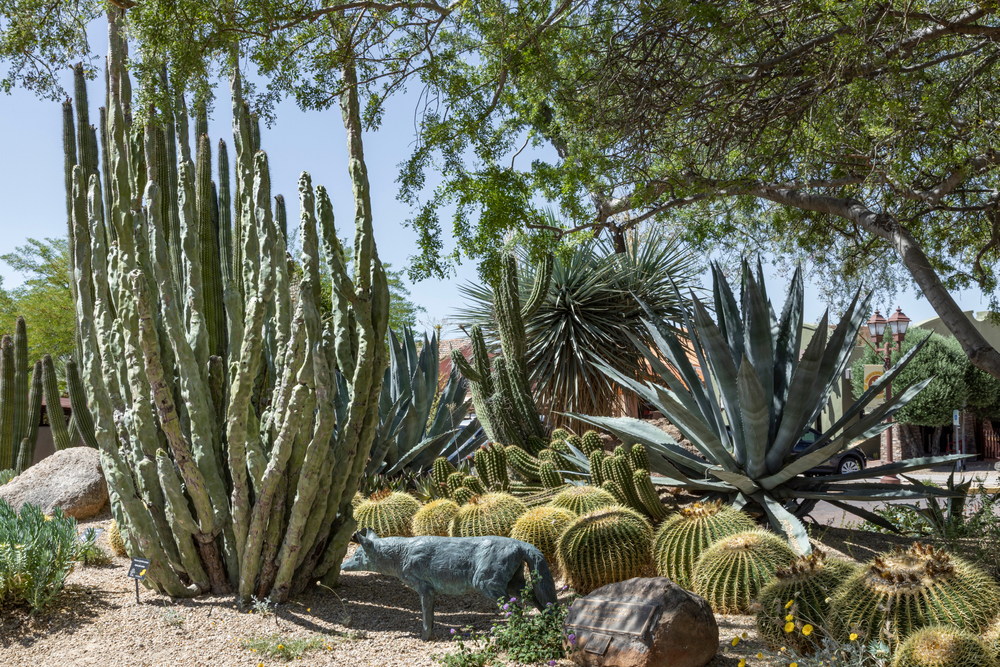
The Grass Ban and the Landscape in Las Vegas
As climate change continues to be an issue countries, regions, and individual cities are trying to combat the effects of it. In Las Vegas, water, like many cities on the west coast, is becoming a limited resource. As a result, water officials have and are continuing to come up with regulations to deal with these issues. They are trying to implement the grass ban and change the landscape in Las Vegas.
What Is the Ban for the Landscape in Las Vegas?
In the last two decades, water officials in Las Vegas have tried to convince residents to replace their green lawns and plants with plants suitable for the desert. Now, officials want to use the Nevada Legislature to ban 40% of the grass that is left.
According to the Southern Nevada Water Authority, there are only about 8 square miles of grass that no one uses or steps on. This non-functional turf is located at office parks, developments for housing, as well as street medians.
Regulations That Are Already in Place
In 2003, the water authority prevented developers from landscaping the front yards of new subdivisions with greenery. The water authority has different directives for the yards of homeowners and public parks.
The banning of non-functional grass will only affect the common areas of homeowner associations and land owned by commercial property owners. For homeowners, the current law is that either 50% of rear and side yards or 100 square feet can be grass. The cut-off is 5,000 square feet. As for older properties, homeowners were offered a rebate of $3 per square foot for tearing out sod.
Even with the rebate program in place, six times fewer acres have been converted to drought-friendly plants when compared to 2008. Also, when compared to 2019, the consumption of water has increased by 9%.
Non-residential developments cannot have new turf unless they are schools, cemeteries, parks, or property that has a special permit. Golf courses can only have five acres per hole. For driving ranges, they can only have an additional 10 acres.
Although parks and recreational areas used by communities don’t have grass restrictions, they do have to follow certain watering regulations.
These conservation measures that were implemented in 2003 are effective because by 2019 water consumption has been cut in half. This is despite the fact that the population has grown by 730,000 people.
Reasons for the Ban
The Southern Nevada Water Authority found that over the years, the Colorado River’s basin has been facing the worst drought due to less snowfall. As for Lake Mead, one of the river’s biggest water storage reservoirs and the source of drinking water in the area, it is three trillion gallons below its normal capacity. In fact, since January 2000, it has dropped 130 feet.
In 2020, Las Vegas had one of the driest years with 240 days of no rainfall. As for the water supply, 90% of it coming from the Colorado River, there is also an issue. The Colorado River provides water to six states plus Mexico.
As drought continues due to climate change, the river will provide less and less water. As a result, the water allocated for California, Arizona, and Nevada will be cut even more.
The U.S. federal government is expecting Lake Mead to fall below 1,075 feet this year. This is going to further reduce the amount of water available for Nevada.
The Southern Nevada Water Authority is hoping to eliminate 50% of the 5,000 acres of non-functional grass by 2035. According to Integrated Resource Planning Advisory Committee Report, reaching this target will save 365 million gallons per year.
Benefits of the Grass Ban
Compared to drought-tolerant plants, like succulents and cacti, non-functional grass needs four times more water. If you were to get rid of this grass, annual water consumption would be 15% less than what it is now. In addition, 14 gallons of water per person per day would be saved.
More Regulation
The Integrated Resource Planning Advisory Committee is also trying to limit turf made for cool seasons in public places. They want to replace cool-season turf with warm-season turf at public parks. The Southern Nevada Water Advisory estimates that for every square foot that is converted, 21 gallons of water will be conserved. Changing service rules and offering incentive programs may help them achieve this goal.
Although some see these proposals as a necessity due to climate change, others touch on the fact that grass helps to fight against the effects of the urban heat island. If these new proposals become regulations, landscapers would have to adhere to them. There would also be fewer contracts for mowing and lawn care businesses.
At the present time, there are incentives for smart irrigation. Landscapers can get a Water Smart Contractor designation by completing an eight-hour water efficiency training provided by the Southern Nevada Water Association. For a landscaper in Las Vegas, it is becoming a necessity to have the title water conservation expert as one of their qualifications.
The Wrap Up for Landscape in Las Vegas
Although many regulations and incentive programs are already in place in Las Vegas, it seems more needs to be done. Using desert-friendly landscaping in Las Vegas in areas used by the public can help further reduce the need for water. Las Vegas landscapers are becoming well versed in this kind of landscaping. It is, therefore, necessary and possible to continue to change the landscape in Las Vegas.
Share this post!